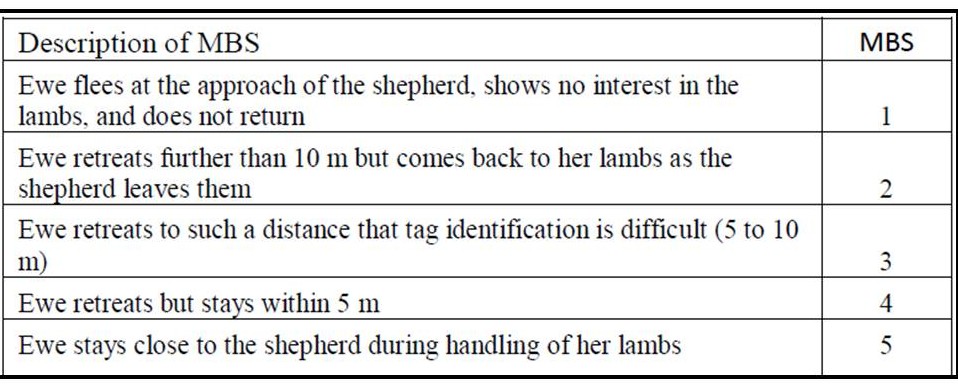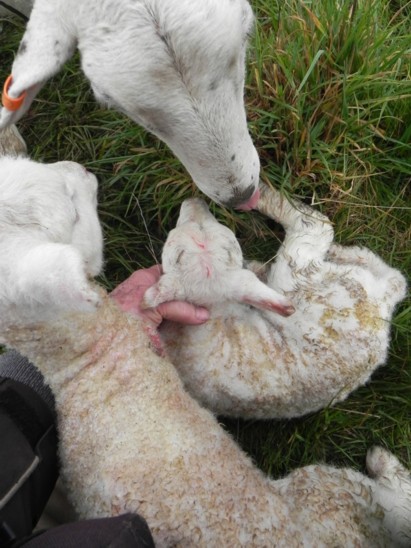Boost lamb survival with ewe maternal behaviour scoring
Introduction by Patrick Francis
Ewe Maternal Behaviour Scoring is another tool farmers can use to improve lamb survival and growth rates. Nuffield scholar Carly Buttrose spoke to the New Zealand scientist who has undertaken assessment of the scoring system and included details in her scholarship report “Optimising the reproductive potential of sheep production systems. Carly’s outstanding report is based on research undertaken in UK, Ireland, and New Zealand. She reviews many of the lamb survival strategies being highlighted in Australia by sheep consultant Jason Trompf (see separate article on this site). Her executive summary concludes: “Nutrition is the single most important factor to maximise reproductive performance and resulting lamb survival. This poses more of a challenge in Australia’s environment than some other countries.”
During the spring lambing on Moffitts Farm we scored ewes for their behaviour when lambs were being checked soon after lambing. We found the scoring system as described in Table 1 to be accurate. Virtually all our ewes scored 4 or 5 which with high paddock feed levels (4000 – 5000 kg dry matter per hectare) providing ideal nutrition and protection from wind chill in the birthing zone correlates with the exceptionally high lamb survival achieved.
The following is an edited version of Carly’s findings about ewe maternal behaviour scoring. Her full report is well worth reading and is available on the Nuffield Australia web site www.nuffield.com.au or email inquiries@nuffield.com.au
Ability of a ewe to birth and rear a lamb is referred to as maternal ability and there is a large variation for this trait both between and within breeds (Cottle, 2010). Research by Dr Julie Everett-Hinks with AgResearch in Invermay, NZ, has highlighted the importance of maternal behaviour and ability on lamb survival. Maternal behaviour is often measured using the ‘flight test’ which is the distance a ewe will stray from her lamb when a shepherd is tagging her lamb after birth and is a good indicator of the ‘ewe–lamb attachment’. This Maternal Behaviour Score (MBS) is rankled from 1 to 5, table 1 and is directly correlated to lamb survival as well as lamb growth rate; the higher the MBS the heavier the lamb at weaning. The difference between a score four and a score three (retreating five metres compared to ten metres) can equate to an extra 10kg of lamb weaned (Dr Julie Everett-Hincks, Pers. Comm., August 2013).
Table 1: Description of maternal behaviour scores when assessed at tagging. Source: O’Connor et al, 1985

Ewe maternal behaviour score has a significant effect on lamb death risk, due to starvation, exposure and dystocia, where ewes with lower scores have higher lamb mortality rates (Everett-Hincks et al, 2008). Significant improvement in twin lamb bonding with the ewe occurs when the mother remains on the birth site for a minimum of six hours; this is also more likely to occur when both feed on offer and shelter is adequate and human disturbance is kept to a minimum (Everett-Hincks et al, 2008).

Figure 1: A Moffitts Farm Wiltipoll ewe with a maternal behaviour score 5. She displays no fear of the shepherd as her lambs are checked a few hours after giving birth.
Ewe maternal behaviour is also related to nutrition. A ewe in poor condition, who has had to mobilise body fat to offset inadequate nutrition, will be a less attentive mother. This condition is often sub-clinical and not easily diagnosed in the paddock – she will be dopey and disinterested in her lamb (Dr Julie Everett-Hincks, Pers. Comm., August 2013).
Maternal behaviour is a heritable trait, with a 0.15 heritability and repeatability of 0.18-0.21, which is certainly not high but indicates selection using a MBS will assist in improving the mothering ability of a flock (Dr Julie Everett-Hincks, Pers. Comm., August 2013). There are some seedstock breeders which are scoring the MBS and using the information to create an Estimated Breeding Value (EBV) for maternal ability. One of those producers is Andrew Welsh from Twin Farms in Gore, NZ. The Welsh’s breed a composite maternal line called the TEFRom (Texel, East Friesian and Romney) which has been selected for ewe fertility and ability to maintain body condition (Andrew Welsh, Pers. Comm., August 2013). The Welsh’s have worked extensively with Dr Everett-Hincks in researching lamb survival and see the EBV for maternal ability as a positive step to improving lamb survival for their clients.
- Everett-Hincks, JM & Dodds, KG (2008). Management of maternal-offspring behaviour to improve lamb survival in easy care sheep systems, Journal of Animal Science, Vol 86, No. 14 pp 259-270

